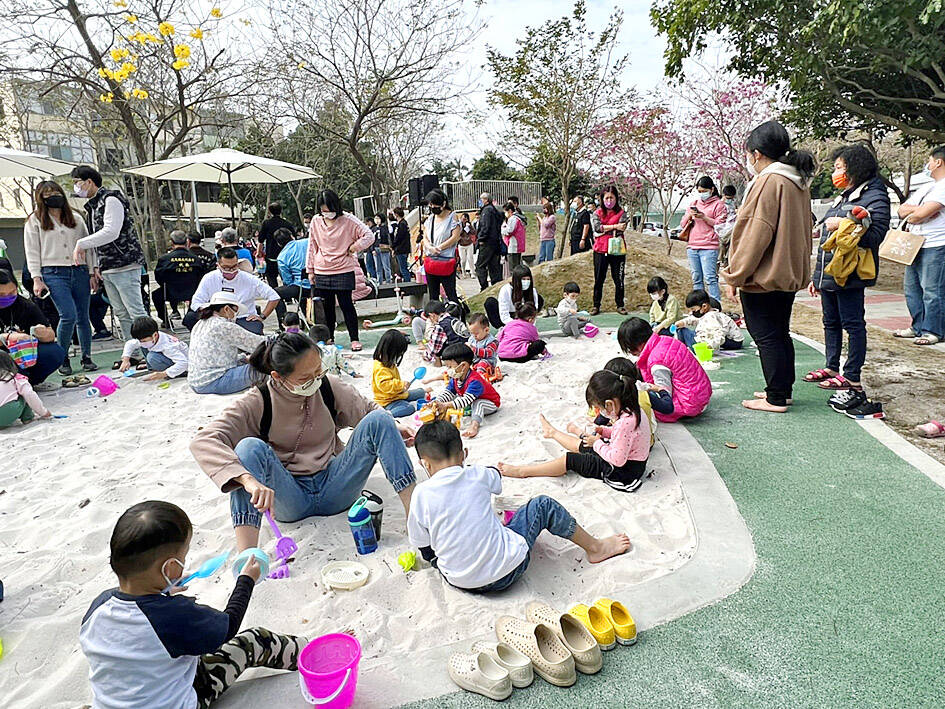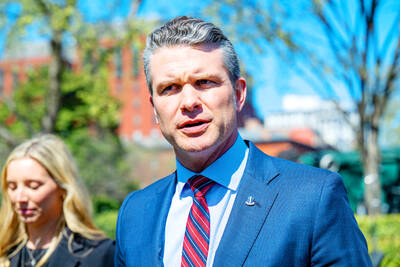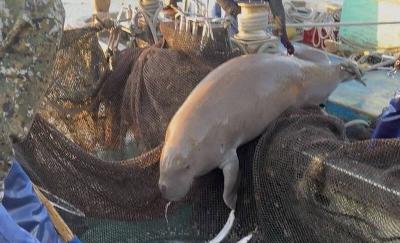Taipei has the highest proportion of residents who have dependents, at more than half last year, data released by the Ministry of the Interior on Monday showed.
It is also where the heaviest financial burden is placed on the “sandwich generation” — those who need to support at least one child and at least one parent.
The “dependency ratio” climbed to more than 50 percent in Taipei for the first time last year, meaning that for every two working-age residents (aged 15 to 64) there is one family dependent, defined as younger than 14 or older than 65.

Photo: Huang Shu-li, Taipei Times
The nation’s aging index is the number of people aged 65 or older divided by the number of people aged 14 and younger, multiplied by 100.
Chiayi County had the highest score in the index last year at 252.45, followed by Keelung at 196.12, Kinmen County at 196.01, Nantou County at 195.74 and Pingtung County at 193.08.
Keelung posted the biggest increase, rising from 184.22 in 2021, while Kinmen recorded the second-biggest increase, followed by Nantou.
In the six special municipalities, Taipei has the highest aging index at 166.1, followed by Kaohsiung at 161.78, while Taoyuan had the lowest score at 101.89.
Taoyuan still trailed Hsinchu City and Hsinchu County, which scored 87.03 and 86.71 respectively. The two regions are the only places in Taiwan where the younger population is bigger than the elderly population.
Regarding families that support elderly parents, Taipei surpassed Chiayi County, with a dependency ratio of 31.44 percent, up from 29.76 percent in 2021. Chiayi County’s ratio was 31.12 percent.
Hsinchu City has the highest dependency ratio for young people at 23.38 percent, followed by Hsinchu County at 22.27 percent and Taoyuan at 19.54 percent.
The lowest financial burden placed on the “sandwich generation” was in Kinmen County and other outlying islands, as they have the most social welfare benefits, subsidies and incentives for residents, ministry officials said.
Many people who are registered as living on outlying islands, work and live on Taiwan’s main island, so their dependency ratio does not reflect the actual situation and cannot be used for comparison, officials said.
House ownership in Taiwan has increased, while there has also been a growth in single-person households, which made up 35 percent of all households nationwide. It is the highest ratio in the nation’s history.
There were 3.22 million single-person households last year, 1.91 million two-person households and 1.64 million three-person households, a record high for all three.
A decade ago, single, two and three-person households totaled 770,000, 340,000 and 150,000 respectively.
Households of four or more people totaled 2.65 million 10 years ago, but dropped to a record low 2.31 million last year, or 25.4 percent of the nation’s total.
The number of four-person households ranged from 1.3 million to 1.34 million throughout most of the past decade, but dropped below 1.3 million in 2020 and plunged to 1.26 million last year.
The average household has 2.56 people living in it, also a record low.
This indicates that the traditional three-generation nuclear family is fast disappearing, officials said, adding that people registered in households might not be related, but the trend shows that the family composition of Taiwan’s population is changing.

The High Prosecutors’ Office yesterday withdrew an appeal against the acquittal of a former bank manager 22 years after his death, marking Taiwan’s first instance of prosecutors rendering posthumous justice to a wrongfully convicted defendant. Chu Ching-en (諸慶恩) — formerly a manager at the Taipei branch of BNP Paribas — was in 1999 accused by Weng Mao-chung (翁茂鍾), then-president of Chia Her Industrial Co, of forging a request for a fixed deposit of US$10 million by I-Hwa Industrial Co, a subsidiary of Chia Her, which was used as collateral. Chu was ruled not guilty in the first trial, but was found guilty

‘DENIAL DEFENSE’: The US would increase its military presence with uncrewed ships, and submarines, while boosting defense in the Indo-Pacific, a Pete Hegseth memo said The US is reorienting its military strategy to focus primarily on deterring a potential Chinese invasion of Taiwan, a memo signed by US Secretary of Defense Pete Hegseth showed. The memo also called on Taiwan to increase its defense spending. The document, known as the “Interim National Defense Strategic Guidance,” was distributed this month and detailed the national defense plans of US President Donald Trump’s administration, an article in the Washington Post said on Saturday. It outlines how the US can prepare for a potential war with China and defend itself from threats in the “near abroad,” including Greenland and the Panama

DEADLOCK: As the commission is unable to forum a quorum to review license renewal applications, the channel operators are not at fault and can air past their license date The National Communications Commission (NCC) yesterday said that the Public Television Service (PTS) and 36 other television and radio broadcasters could continue airing, despite the commission’s inability to meet a quorum to review their license renewal applications. The licenses of PTS and the other channels are set to expire between this month and June. The National Communications Commission Organization Act (國家通訊傳播委員會組織法) stipulates that the commission must meet the mandated quorum of four to hold a valid meeting. The seven-member commission currently has only three commissioners. “We have informed the channel operators of the progress we have made in reviewing their license renewal applications, and

A wild live dugong was found in Taiwan for the first time in 88 years, after it was accidentally caught by a fisher’s net on Tuesday in Yilan County’s Fenniaolin (粉鳥林). This is the first sighting of the species in Taiwan since 1937, having already been considered “extinct” in the country and considered as “vulnerable” by the International Union for Conservation of Nature. A fisher surnamed Chen (陳) went to Fenniaolin to collect the fish in his netting, but instead caught a 3m long, 500kg dugong. The fisher released the animal back into the wild, not realizing it was an endangered species at